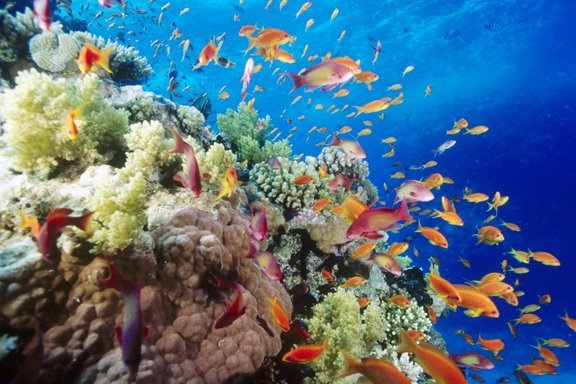What is coral bleaching?
Coral bleaching is the change of colour in coral reefs, to an off white colour. Coral bleaching is a stress condition which occurs for many reasons in relation to climate change.
Coral bleaching is the change of colour in coral reefs, to an off white colour. Coral bleaching is a stress condition which occurs for many reasons in relation to climate change.
How does it occur?
In scientific terms ''Coral bleaching is the loss of intracellular endosymbionts (Symbiodinium, also known as zooxanthellae) through either expulsion or loss of algal pigmentation.''
When the water is too warm, corals expel a tissue which causes it to turn white. Other known causes include extreme cold waters, toxins and salinity levels.
Can it be fixed?
Bleached corals are still alive and can recover from a stressful condition, as long as it is not too severe. It can take along time for the coral to regain its natural colour.
In relation to climate change..
As the temperatures rise in the atmosphere, the sea absorbs some of this heat and therefore becomes warmer. It also absorbs green house gases and toxins. Climate change is the sole reason why coral reefs are being bleached.
The Great Barrier Reef
The Great barrier reef is a great example of coral bleaching. It has been bleached since the 1990's and had 2 mass coral bleaches since, in 1998 and 2002.
In 1998 water temperatures in the reef were 2 degrees above normal. 51% of the coral showed moderate to high bleaching. Different water species were also effected.
In 2002, 69% of the inshore coral was highly damaged
In scientific terms ''Coral bleaching is the loss of intracellular endosymbionts (Symbiodinium, also known as zooxanthellae) through either expulsion or loss of algal pigmentation.''
When the water is too warm, corals expel a tissue which causes it to turn white. Other known causes include extreme cold waters, toxins and salinity levels.
Can it be fixed?
Bleached corals are still alive and can recover from a stressful condition, as long as it is not too severe. It can take along time for the coral to regain its natural colour.
In relation to climate change..
As the temperatures rise in the atmosphere, the sea absorbs some of this heat and therefore becomes warmer. It also absorbs green house gases and toxins. Climate change is the sole reason why coral reefs are being bleached.
The Great Barrier Reef
The Great barrier reef is a great example of coral bleaching. It has been bleached since the 1990's and had 2 mass coral bleaches since, in 1998 and 2002.
In 1998 water temperatures in the reef were 2 degrees above normal. 51% of the coral showed moderate to high bleaching. Different water species were also effected.
In 2002, 69% of the inshore coral was highly damaged


 RSS Feed
RSS Feed